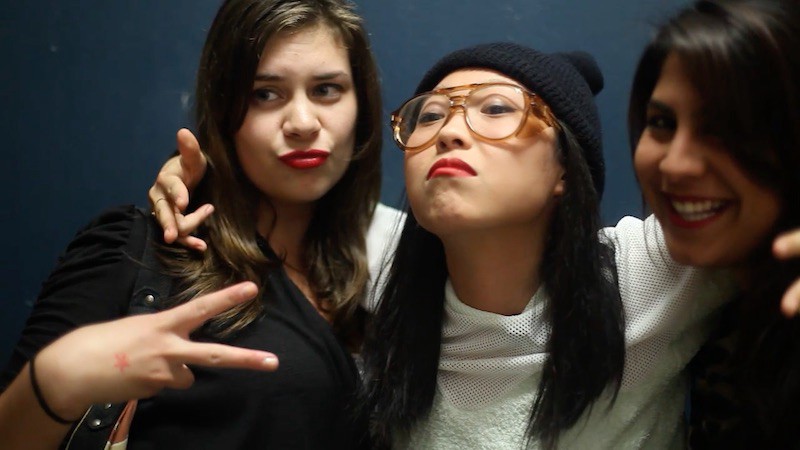“Bad Rap” is Salima Koroma’s directorial debut. She’s a former video producer for Time Magazine, NowThis and Current TV. She is also a former hip-hop and K-pop news writer. Koroma is currently at work writing screenplays for film and television. (Press materials)
“Bad Rap” will premiere at the 2016 Tribeca Film Festival on April 16.
W&H: Describe the film for us in your own words.
SK: “Bad Rap” is a feature documentary about four Asian-American rappers — Dumbfoundead, Awkwafina, Rekstizzy and Lyricks — who dream of succeeding in the mainstream, selling out huge venues, hearing themselves on the radio and becoming household names.
W&H: What drew you to this story?
SK: On the surface, “Bad Rap” is a film about Asian-American rappers trying to make it big. But the more I spoke with artists, the more I realized their stories went far beyond the idea of becoming successful recording artists. “Bad Rap” became a film about what it means to be an outcast, what it means to love something so much, but be told you can’t be part of it. It’s a story about fighting desperately for something you want despite your internal doubts and fears.
These are themes that seem specific to the music industry, but they’re actually universal! The thread that connects these Asian-American artists to each other is the same thread that connects other people who also have those same doubts and fears and desire to belong.
W&H: What do you want people to think about when they are leaving the theater?
SK: I want them to come out of there rooting for the characters. I want people to relate to what the artists are spitting. And I want them to experience this whole other world that has, until recently, been left out of the hip-hop conversation.
W&H: What was the biggest challenge in making the film?
SK: I shot, edited and built out the script on my own. Although that was tough on its own, it doesn’t compare to the mental battles I had with myself late at night while in the editing booth by myself. Sometimes I’d look at a scene and question if it was making sense. I’d question if it was enjoyable. I’d wonder if I should use this soundbite or that soundbite. As directors, we’re our own biggest critics. And although I love that quality about myself, it was also a huge obstacle.
W&H: How did you get your film funded? Share some insights into how you got the film made.
SK: My co-producer Jaeki Cho and I crowdsourced via IndieGoGo. We agonized over how much to ask for. We settled on $25,000 and ended up raising almost $34,000. In the grand scheme of things, what we raised was very small, considering the clearances, the traveling, the equipment, studio rentals, etc. Had we known how much everything would cost — and a lot of the costs sneak their way in after the film is done — we would have had a better financial strategy.
But, we have a lot of talented and generous friends who helped us from production to the end. Even if there’s not too much money, the value of friends who are willing to help is unprecedented.
W&H: What’s the best and worst advice you’ve received?
SK: The worst advice was, “The hard part is done — now on to the film festivals.” Spoiler alert: the film festivals are the hard part. The best advice was go onstage and film until someone kicks you off.
W&H: What advice do you have for other female directors?
SK: Make a film that you love. This is very specific for documentary filmmakers: If you’re spending years on a project, make sure it’s a project you’ll care about until the end. No one wants to be stuck with doing something they’re lukewarm about for five years.
W&H: Name your favorite woman-directed film and why.
SK: Zoya Akhtar is everything. Of the three spectacular feature films she has directed, her 2009 debut, “Luck By Chance,” has courted my heart since I got the DVD in the mail seven years ago. The movie is about an aspiring actor (Farhan Akhtar) who moves to Mumbai to join the ranks of Bollywood’s legendary. On the way, he begins to lose sight of the people who loved him before his rise to stardom.
If you’ve ever watched a Bollywood movie — at least the classic ones — they’re all sprawling landscapes, unreal colors and beautiful choreography; they’re almost fantastical. With “Luck By Chance,” Akhtar peeled the curtain back and showed that the film industry can be infinitely more scary and cutthroat. It jerks the viewer out of the fantasy that Bollywood created, and suggests that for some, the film industry is a dream, and for others, a nightmare.







